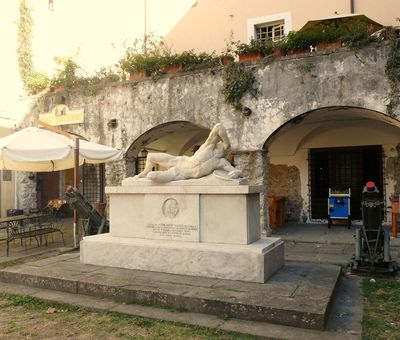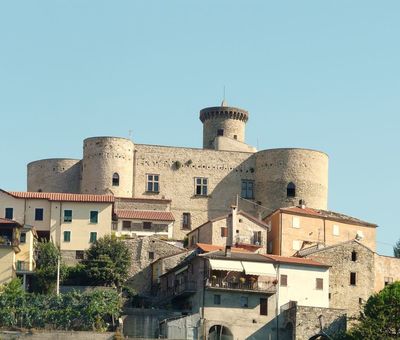A den of heroes
Why was "Nardi" added to the name of Licciana? Well, the story behind it comes from the pages of the Risorgimento, the Italian drive towards unification. It was here that Biagio Nardi was born, one of the prime movers in the Modena uprisings of 1831, which led to the liberation of the city and, eventually, of the Duchy of Modena.
Another native of Licciana was Anacarsi Nardi, who was shot in Calabria in 1844 along with followers of the Bandiera brothers, and whose remains were transferred to Licciana in 1910, to be laid to rest in the monumental tomb in front of the town hall. And it was to honour his hero's name that, in 1933, the municipality was christened Licciana. It is known to some as "heroes' cove", because apart from Nardi, it was also the birthplace of Alceste De Ambris, the revolutionary syndicalist at the beginning of the twentieth century.
Scandal in the palace
A castle, a beautiful and cultured marquess, an amorous rivalry and a worldwide scandal: the castle of the Malaspina family lacks nothing. The town of Bastia lends its name to the castle there, which dates back to the sixteenth century and which was built on the remains of an older fortress, the thirteenth-century stronghold of Santa Caterina. Pre-eminent among the castle's characters is Anna Malaspina, the last marquess of Bastia, who lived in the 1700s. A woman of good looks and fierce intelligence, her relationship with the minister Du Tillot got her involved in an intrigue-heavy diplomatic mission. She was sent to France to vie with Madame Du Pompadour over the affections of King Louis XV. The mission was not a total success, but the marquess was favoured by the French crown enough to secure a royal pension.
A mysterious oak and much more
Legends have swirled around Licciana Nardi for centuries. Should we believe them? Perhaps yes, perhaps no, but in spite of the scepticism surrounding them they have somehow made their way down through the centuries. No one remembers who they originated with.
For example, they talk about a vast mysterious oak tree, called Morian, where witches gathered for their manic dances beneath the full moon. Nobody knows where this tree stands exactly; some claim to know but will never take you there.
They have also talked since time immemorial about a city buried in the Taverone valley. This too has a name, Venelia, and is said to have been destroyed by the Saracens. A few funerary urns have been found, but the legends maintain that the devil reduced the town's treasure to ashes. Licciana has spawned so many stories, of ghosts, spirits, giant skeletons found in the fields and a massive golden hen with a dozen chicks. Let your imagination run wild, and if someone seems keen to tell you a story, stay and listen. You never know.





